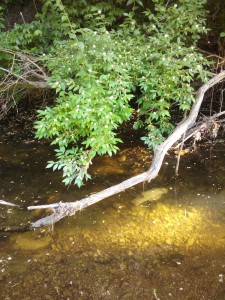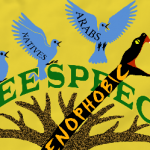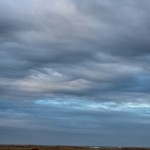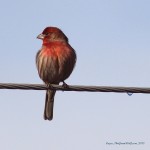Back in March, I went to visit my parents in Missouri. While I was there, I was horrified to find that the first little patch of scrub woods that I considered “my territory”, as it were, had been completely bulldozed and turned into a pharmacy. There wasn’t a single bit left. What made it worse was that I had intended during this visit to pick up a few more physical traces of the place to go with the pine cone from there on my place altar, because I knew that at some point there’d be no more chances. I guess I was just a little too late.
At the time, I did some immediate processing to try to work through my shock and pain. I wanted to reach out and know that I wasn’t alone in that feeling of deep loss for this place. Since then, I’ve slowly and carefully been uncovering those feelings. I haven’t done a full funerary rite just yet, but the potential is growing.
I keep finding myself going back to my ecopsychology shelves for supporting material in this process. I feel like so much of neo paganismis about hearkening back to places across the ocean, or abstracting places and things into spirits and deities. While the totems and gods have places in my path, this raw, visceral pain calls for a more immediate, physical connection. That place that died is not the place of Artemis, or of totems, but of a child’s wonder at an emerging butterfly and pieces of sandstone that sheltered garter snakes, of poplar trees reaching past the power lines overhead.
So I find inspiration in things that have spirit, but are not necessarily dealing with literal spirits, like the Altars of Extinction project spearheaded by Mary Gomes, a well-known figure in the field of ecopsychology (but also published in Reclaiming Quarterly). In this ritual project it is species, not spirits, that are remembered and called upon. Altars are built to creatures driven to the edge and over, whom we will never see again on this earth because of our excesses. These are centers of grieving for these losses, for the physical animals and plants gone forever.
And I look to the writings of Joanna Macy, whose engagement with collective and personal grief began with protesting against nuclear facilities, but expanded into a greater understanding of how we as individuals and communities feel the loss of the world around us. While all of her writings that I’ve read have been inspirational, I continue to be awestruck by the Council of All Beings ritual that she co-wrote. Again, it is the physical beings that are mourned. And our feelings of being overwhelmed and powerless in the face of so many traumas on a global scale as well as personal are also approached with care and compassion.
I do not say this to speak as though compassion and grieving, and connection to physical beings, have never had a place in neopaganism. But it seems sometimes that many of us spend so much time with our heads focused on what’s going on in the spirit world, waiting for a sign or symbol from another plane, that we get a bit detached from this one. And in the same way, the dominant American culture, that informs so much of American neopaganism, does not offer a place to grieve for the loss of places, of species, of entire systems. I see a lot of “celebrate nature and its cycles” rituals, and I occasionally see places for pagan funerary rites and the like. And I know other individual pagans have suffered similar losses, from the overwhelming sympathy I received when I wrote about my own grief.
But there’s a decided gap in overarching American neopagan spirituality when it comes to grieving greater systems and patterns, and it parallels a similar gap in the dominant culture. We don’t talk about grieving for the environment, perhaps because we’re conditioned to approach the problems from an analytical, let’s-find-a-solution perspective. We’re expected to remain constructive about it all. We don’t have a setting where it’s okay to cry ourselves to pieces over the imminent extinction of many of the wold’s big cats–or some of the most vulnerable little plants. If we treat the loss of a place as being on par with the loss of a person, we’re often seen as having unusual priorities, or being “too sensitive”, or even not caring about people enough.
Perhaps I’m suffering from tunnel vision, though. Maybe I just haven’t been seeing the discussion and the practice of grieving for places and species and ecosystems in neopaganism the way I’ve seen it in ecopsych. Am I missing something? Do you, dear readers, have resources and angles I haven’t found? You gave me a pleasant surprise when so many of you resonated with my loss of my sacred childhood place–perhaps you’ll show me that there’s more going on in intesive grief-work in neopagan spirituality than I had thought.
In the meantime, I continue to meditate on my loss, and to contemplate how I want to move forward from it. There will be a place and a time set aside, when the right place and time come together.
Postscript: The photo below is of the creek near the place where I moved to next, across town. This place still exists, albeit in a much more heavily developed form than when I met it two decades ago. I have no pictures of the place I lost, and there are no photos that I know of that show it as I knew it, as by that point it was an isolated open lot next to a dilapidated apartment complex, and no one else seemed to particularly care about it. But I wanted to leave at least a little beauty at the end of this, as it was difficult to write.












